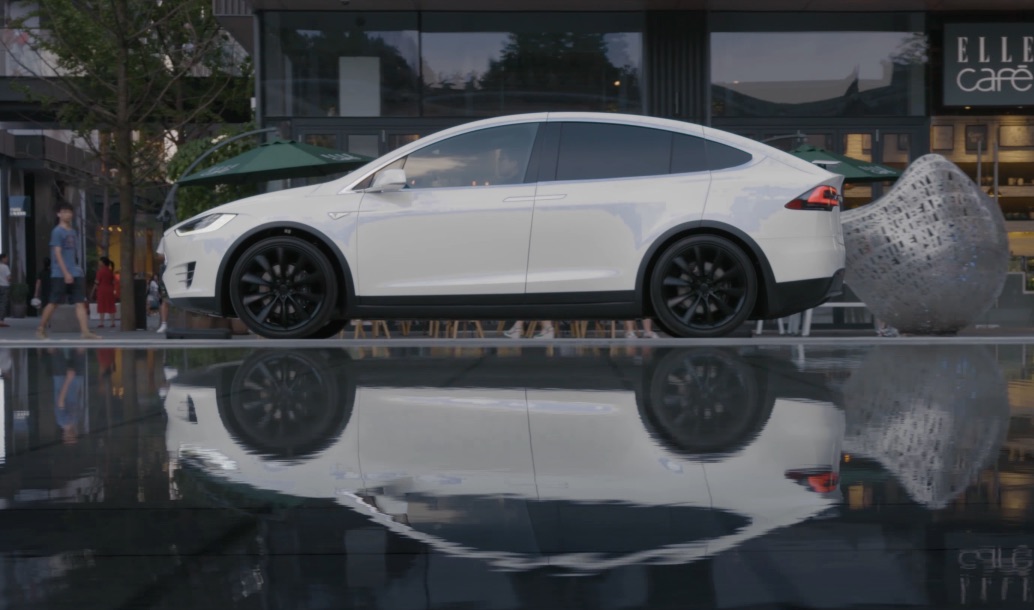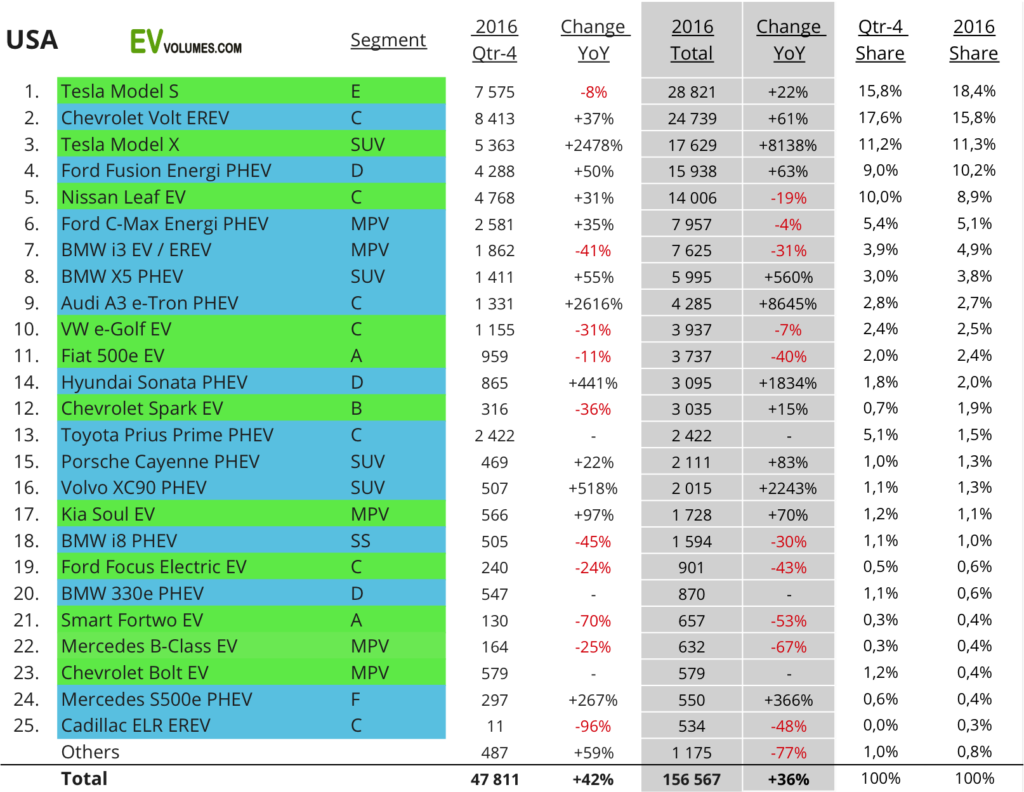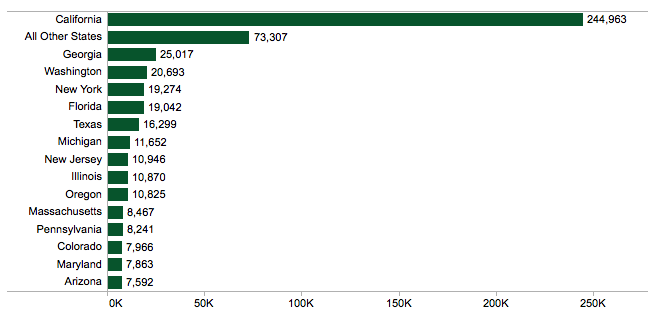News
Tesla Model X cited as “most significant vehicle”, by growth contribution to record 2016 PEV sales

Electric and plug-in hybrid car sales established new sales records in 2016 with the Tesla Model X earning the title of “most significant vehicle” according to EV Volumes. The industry tracking site cites the Model X for its contribution to the growth of plug-in car sales in the US this past year.
EV Volumes defines any car with a plug as a plug-in, which may cause some Tesla fans heartburn. The site does acknowledge that plug-in hybrids are probably a stop-gap solution until there are more pure electric cars with at least 200 miles of range available to American consumers.
“The volume increase in 2016 can be attributed to Tesla (+95 % for S & X combined), the new GM Volt (+61 %), Ford Fusion (+63 %) and a number of newcomers, mostly in the Plug-in Hybrid category.” indicates the published report. “By its growth contribution, the Tesla Model X must be regarded the most significant vehicle this year.”
The Tesla Model S was the overall sales leader for the year with 28,821 units sold to US customers, a 22% increase over 2015. The Model X finished the year with 17,629 US sales, good enough for 3rd place overall. The second generation Chevy Volt claimed 2nd place with 24,739 cars delivered to customers in the US, a 61% increase.
California claimed nearly 50% of all plug-in sales with the other 9 states that adhere to the California zero emissions standards accounting for another 13%. Combined, all ten states accounted for nearly 62% of all US plug-in sales. In the conventional car market, those states make up about 28% of the US new car market.
Other cars with plugs that sold more than 10,000 units in the US in 2016 include the Ford Fusion Energi plug-in hybrid, which saw its sales grow 63% last year to almost equal the Tesla Model X in total sales. The Fusion Energi now accounts for about 10% of all Fusion sales, despite the fact that Ford CEO Mark Fields insists that nobody wants to buy electric cars.
Sales of the Fusion Energi took off midyear after Ford began to advertise it as the longest range plug-in hybrid available. That claim is technically accurate — the Fusion Energi can travel more than 600 miles on a tank of fuel. But it is misleading in that the car only has 22 miles of range on battery power alone, which is only fair to middling for a plug-in hybrid these days.
To give the Fusion Hybrid more range, Ford simply increased the size of the gas tank. All of which suggests that the buying public is still woefully uninformed about cars with plugs, just as Elon Musk always claims when he talks about what a poor job car companies and automobile dealers do marketing electric cars.
The last car to sell more than 10,000 units last year is the venerable Nissan LEAF. Although Nissan promises an all new second generation LEAF with 200 miles or more of range sometime before the end of 2019, the current car is hopelessly out of date. It is essentially the same as it was when it first went on sale at the end of 2010. Still, the LEAF soldiered on to sell just over 14,000 cars in the US last year.

2016 Plug-in car sales in the US. Source: EV Volumes
In all, more than 156,000 cars with plugs were sold in the US in 2016. EV Volumes predicts that number will climb to 250,000 or more in 2017, assuming at least 50,000 Tesla Model 3 sedans are included. Whether the Model 3 makes it to market in significant numbers is one of the biggest stories industry watchers will be following this year.

News
Tesla FSD fleet is nearing 7 billion total miles, including 2.5 billion city miles
As can be seen on Tesla’s official FSD webpage, vehicles equipped with the system have now navigated over 6.99 billion miles.

Tesla’s Full Self-Driving (Supervised) fleet is closing in on almost 7 billion total miles driven, as per data posted by the company on its official FSD webpage.
These figures hint at the massive scale of data fueling Tesla’s rapid FSD improvements, which have been quite notable as of late.
FSD mileage milestones
As can be seen on Tesla’s official FSD webpage, vehicles equipped with the system have now navigated over 6.99 billion miles. Tesla owner and avid FSD tester Whole Mars Catalog also shared a screenshot indicating that from the nearly 7 billion miles traveled by the FSD fleet, more than 2.5 billion miles were driven inside cities.
City miles are particularly valuable for complex urban scenarios like unprotected turns, pedestrian interactions, and traffic lights. This is also the difference-maker for FSD, as only complex solutions, such as Waymo’s self-driving taxis, operate similarly on inner-city streets. And even then, incidents such as the San Francisco blackouts have proven challenging for sensor-rich vehicles like Waymos.
Tesla’s data edge
Tesla has a number of advantages in the autonomous vehicle sector, one of which is the size of its fleet and the number of vehicles training FSD on real-world roads. Tesla’s nearly 7 billion FSD miles then allow the company to roll out updates that make its vehicles behave like they are being driven by experienced drivers, even if they are operating on their own.
So notable are Tesla’s improvements to FSD that NVIDIA Director of Robotics Jim Fan, after experiencing FSD v14, noted that the system is the first AI that passes what he described as a “Physical Turing Test.”
“Despite knowing exactly how robot learning works, I still find it magical watching the steering wheel turn by itself. First it feels surreal, next it becomes routine. Then, like the smartphone, taking it away actively hurts. This is how humanity gets rewired and glued to god-like technologies,” Fan wrote in a post on X.
News
Tesla starts showing how FSD will change lives in Europe
Local officials tested the system on narrow country roads and were impressed by FSD’s smooth, human-like driving, with some calling the service a game-changer for everyday life in areas that are far from urban centers.

Tesla has launched Europe’s first public shuttle service using Full Self-Driving (Supervised) in the rural Eifelkreis Bitburg-Prüm region of Germany, demonstrating how the technology can restore independence and mobility for people who struggle with limited transport options.
Local officials tested the system on narrow country roads and were impressed by FSD’s smooth, human-like driving, with some calling the service a game-changer for everyday life in areas that are far from urban centers.
Officials see real impact on rural residents
Arzfeld Mayor Johannes Kuhl and District Administrator Andreas Kruppert personally tested the Tesla shuttle service. This allowed them to see just how well FSD navigated winding lanes and rural roads confidently. Kruppert said, “Autonomous driving sounds like science fiction to many, but we simply see here that it works totally well in rural regions too.” Kuhl, for his part, also noted that FSD “feels like a very experienced driver.”
The pilot complements the area’s “Citizen Bus” program, which provides on-demand rides for elderly residents who can no longer drive themselves. Tesla Europe shared a video of a demonstration of the service, highlighting how FSD gives people their freedom back, even in places where public transport is not as prevalent.
What the Ministry for Economic Affairs and Transport says
Rhineland-Palatinate’s Minister Daniela Schmitt supported the project, praising the collaboration that made this “first of its kind in Europe” possible. As per the ministry, the rural rollout for the service shows FSD’s potential beyond major cities, and it delivers tangible benefits like grocery runs, doctor visits, and social connections for isolated residents.
“Reliable and flexible mobility is especially vital in rural areas. With the launch of a shuttle service using self-driving vehicles (FSD supervised) by Tesla in the Eifelkreis Bitburg-Prüm, an innovative pilot project is now getting underway that complements local community bus services. It is the first project of its kind in Europe.
“The result is a real gain for rural mobility: greater accessibility, more flexibility and tangible benefits for everyday life. A strong signal for innovation, cooperation and future-oriented mobility beyond urban centers,” the ministry wrote in a LinkedIn post.
News
Tesla China quietly posts Robotaxi-related job listing
Tesla China is currently seeking a Low Voltage Electrical Engineer to work on circuit board design for the company’s autonomous vehicles.

Tesla has posted a new job listing in Shanghai explicitly tied to its Robotaxi program, fueling speculation that the company is preparing to launch its dedicated autonomous ride-hailing service in China.
As noted in the listing, Tesla China is currently seeking a Low Voltage Electrical Engineer to work on circuit board design for the company’s autonomous vehicles.
Robotaxi-specific role
The listing, which was shared on social media platform X by industry watcher @tslaming, suggested that Tesla China is looking to fill the role urgently. The job listing itself specifically mentions that the person hired for the role will be working on the Low Voltage Hardware team, which would design the circuit boards that would serve as the nervous system of the Robotaxi.
Key tasks for the role, as indicated in the job listing, include collaboration with PCB layout, firmware, mechanical, program management, and validation teams, among other responsibilities. The role is based in Shanghai.
China Robotaxi launch
China represents a massive potential market for robotaxis, with its dense urban centers and supportive policies in select cities. Tesla has limited permission to roll out FSD in the country, though despite this, its vehicles have been hailed as among the best in the market when it comes to autonomous features. So far, at least, it appears that China supports Tesla’s FSD and Robotaxi rollout.
This was hinted at in November, when Tesla brought the Cybercab to the 8th China International Import Expo (CIIE) in Shanghai, marking the first time that the autonomous two-seater was brought to the Asia-Pacific region. The vehicle, despite not having a release date in China, received a significant amount of interest among the event’s attendees.









